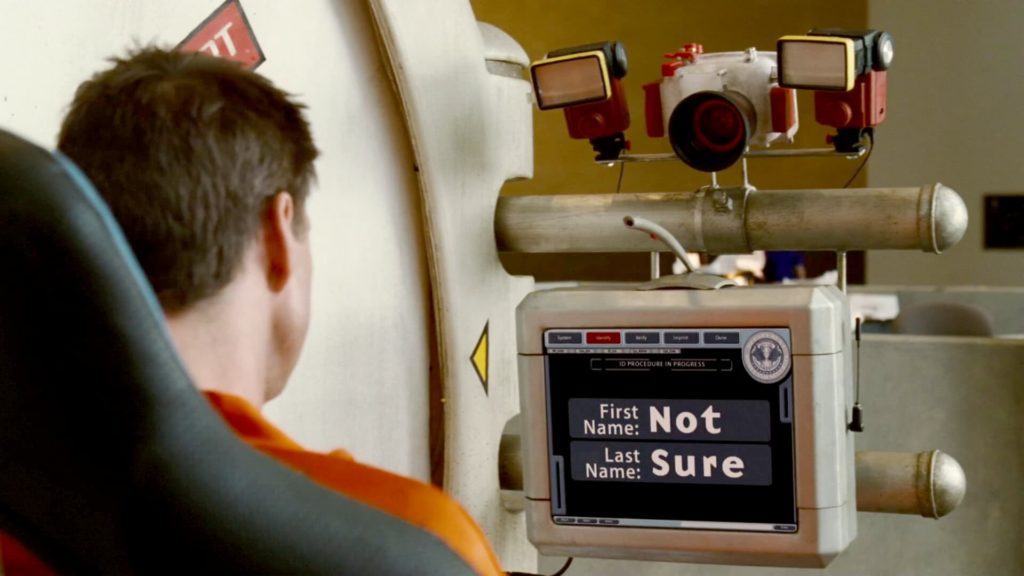Over the years, many organisations we’ve worked with have been surprised to learn that we place much greater emphasis on strategy and content than visuals—and yet we’re a design company!—and therefore we are laying out our philosophy and methodology here as future reference. This article explains, in a summarized way, the standard creative & implementation process that occurs when idéemarque leads a « content & design » project (with your team or ours) from start to finish, be it a website or a complex print-ready document (ex: an annual report, a product guide, a sales and marketing brochure, a high-stakes high-impact presentation, etc.).
To most people, it may be surprising (and sometimes counterintuitive) to hear us say that we don’t want to touch design until everything else is nailed down, but this comes from our business logistics management and product development career experience. We have managed software engineering projects in the past, and we know for sure that certain types of resources have different types of costs and timelines, hence our unconventional approach for a design agency. You will see, every piece of the chain clicks into place neatly.
This article is a peek into Jeff’s mental processes. Viewer discretion is advised. Coarse language may be used. Strap on to your jetpacks and remote detonators, because we’re pushing forward, and we ain’t scared of high-altitude maneuvers.
What’s your secret recipe, Jeff?
The « flow » of steps (or « phases » or « milestones ») goes generally like this, with each step often having its own subgroup of people/specialists (if applicable, depending on whether some of it is done internally or if it’s all done by idéemarque) executing the step:
- Strategy: planning and informations gathering from the client, the objectives and scope of the whole project, what is and isn’t desired. If you don’t know exactly who you’re talking to, why and how, and where you should stop, you are essentially gambling.
- Information architecture: structuring/outlining the skeleton of the website or document (ex: annual report); that is, which pages are needed (and shown/hidden) and what the menus (for websites) and sections structure would look like. Define what would be the reader’s or visitor’s flow.
- Content creation and gathering: in idéemarque’s workflow, text is meant to be nailed down first, before images and design. This does not necessarily prevent image content gathering & creation at the same time, especially research (ex: moodboards, competition/prior art analysis), but the point is that if you spend your time designing everything, and « then write the text », chances are your text will never fit or will force your design to be redone to match the text. So save yourself the costly « rework » and »nail » the texts first, if at all possible. Also, your content writer and translation teams should work hand in hand (if they are not the same person) at the same time from the get go, to spot cultural, linguistic or localization issues before you do any visual design; because you don’t want to have to « fix this in post-production. »
- Layout wireframes: low-quality (not hi-fidelity) mockups that illustrate how the text will be arranged visually in each page, and where images/videos/widgets/etc. should go, both in desktop and mobile formfactors. The point is to spot usability/flow problems early, not waste time drawing pretty details.
- Graphic design: the design team (illustrator, graphics artist, photographer, videographer, typographer, etc.) then goes wild with creating all the visual assets to be used for the website builder/integrator; in addition to the individual image assets, this team makes « high-fidelity » mockups (from the wireframes) that can be reviewed and approved before the crazy integrator will have to do their work
- Web integration: a web « integrator » (or developer) turns the mockups and assets into reality (ex: CSS + WordPress or Tiki or HTML + Javascript or whatever tool is being used). Basically, we tell the developer, « Here, Astérix, take this magic potion with you. You are going to need it. » and hand them a big pack of beer or kombucha (or both). They are not allowed back out of the cave until they have a working website or a burnt down server.
- Final review and deployment: if everything went well in the previous steps, this should be a formality and you should never have to do anything but minor adjustments.
Wait, isn’t that pretty rigid?
Why is it ordered sequentially like that?
Imagine an assembly line in the world of lean manufacturing. Or Doom 4’s « push forward combat » gameplay revival. That’s how we operate (minus the cacodemons).
While minor halts or adjustments happen, and retroactive feedback loops can also exist when something unforeseen comes up, we assume our only direction is forward and we act accordingly. Like the Demon Wall of King Raithwall’s Tomb, we are relentless in our pursuit of advancement (this is also a metaphor to illustrate that our competition will get crushed against the door if they don’t have the level and skills to stand up to us 😉)
« But Jeff », we hear you say, « we want to be agile, and constantly deploy stuff, and we just want a quick prototype out there or some temporary website/brochure that we can use right away for our tradeshow next week! Can’t we just do a quick design and then figure out the rest later? »
Sure you can… if you like redoing projects three times. We’ve often been called in to rescue clients’ projects, and the scenario almost invariably is: they have been working on a website (or annual report), and in the rush of « We need it yesterday, we don’t have time for a week of strategic brainstorming and weeks of working on texts! Just make it pretty for now, Steve! » and « Our website looks dated, we just need a new theme, get it done! » they cobbled together a modern but generic-looking website/document, with cliché stock photography, overly long (or meaninglessly short) texts full of buzzwords that don’t mean jacksquat, and the result is:
- When they show the website to their friends and family, they still can’t explain « what they do for a living ».
- They’re too ashamed of the weasel words to show this to their best prospective clients.
…So tell me, why did you make a website again?

Yes, yes, « perfect is the enemy of good« . We know, we agree on principle. But we, at idéemarque, also say that « nothing is more permanent than a temporary solution » and that half-baked is your own worst enemy, because you not only are stuck with something half-usable for a long time, but you eventually have to re-do it and go through all the productivity costs again.
It’s a balancing act. Imperfection in the pursuit of continuous delivery makes sense if your imperfections are minor details that are not dependencies/inputs to other steps of the creative process, and if they don’t harm your sales pitches to prospective customers. In other words, don’t obsess about your 404 page or the font colors on your brochure, but do obssess about getting the text right, because it influences everything else.
Our sequence of steps doesn’t mean you can’t parallelize some of the work. You can optimize the critical path a little bit. Just realize that while you potentially gain speed while doing so, you may also sacrifice some efficiency. But it totally is possible for the design team to research the visual direction at the same time as the copywriter is working on the texts, and it is possible for your web team to at least research and test ahead of time the technologies needed for the integration and deployment; just don’t ask your web devs to make a full-fledged prototype when you don’t know what contents will go in there, where, and how it will visually look & feel like.
Using an agile process doesn’t mean you can’t aim for perfection on the first shot. In our worldview, it rather means you check and validate continously to make sure you are still headed in the right direction.
Why we’re doing things this way

Astute lean managers among you will recognize that we try to work in a « pull » and « no waste » logistics system. idéemarque’s process flow defined above is meant to achieve two three six key objectives:
- Know where we (that includes you!) are going, at all times.
- Do things properly the first time. Do it once, and only once (ideally). Like Mike Holmes!
- This lets us eliminate costly rework, and therefore minimize (or possibly eliminate) waste. Toyota-style.
- This lets us avoid scope creep (or catch it ahead of time).
- This lets us avoid over-production and overwork.
- This lets us ship more projects, faster, with less frustration (for you and us), less stress, and more predictably… all leading to greater satisfaction for our customers.
As you can see, the whole reason why we devised this process over the years is that it pretty much eliminates the risk of a project going off the rails. You wouldn’t believe how often we hear prospects tell us, « The reason why we want to hire idéemarque is that our internal infernal project is stuck in development hell: we thought we would be done in two weeks… eight months ago. We burned out three teams on this, our staff is now curled up in a corner and drawing pentagrams on the floors! »
Our process explained above should already give you the broad strokes on how to structure your processes. If you need assistance however, we can help you for specialized work in any or all of those steps. Learn more about us or reach out to sing to us the tale of your own organisational inferno, Dante. Jeff may happen to be your Virgilo.

